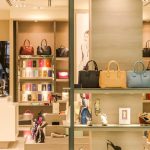Ever heard about Google’s offices, meant to ‘create the happiest, most productive place in the world.’? Society might soon see similar work models crop up for all companies.
There has been a swift shift in the priorities of employees while looking for a job. Work culture has become the top deciding factor for them over the past couple of years. Earlier, working from home was considered a luxury. But after two years of being stuck in our houses, people are eager to get back to the office and reconnect. A Fortune-SurveyMonkey poll of 2,802 adults found that they are more likely to report that there was a drop in their productivity due to working from home. According to the Harvard Business Review reports, frequent in-person interactions lead to commitment, support, and cooperation among team members.

While coming back to the workspace is the winner, people have increasingly preferred workplaces that offer them flexible timings and hybrid work models. Research is also being conducted more and more into the effect of a shorter workweek on enhancing productivity.
Most importantly, though, the new generation wants the workspace to be a place that allows collaborations, enhances creativity, and has well-being at its core. When designing a workspace for the new-age workers, it needs to be kept in mind that the brick-and-mortar offices need to be replaced with vibrant spaces where they can come together, communicate, and brainstorm. Apart from having dedicated areas for people to socialize, it’s crucial to have designated spaces where they can take a break and rejuvenate.

A study by Aruba Networks found that 72% of people believe that the workspace should automatically be able to adjust and update itself. This allows people to have a perceived sense of control. Designing offices with different ceiling heights, paint tones, and lighting can help create this illusion. Allford Hall Monaghan Morris (AHMM) designed Google’s 6 Pancras Square, London office with a modular meeting room concept known as Project Jack. The plywood used allows office staff to construct different sized spaces with varying levels of privacy. This is a perfect example of a flexible workspace where the worker is in control of the surroundings.

As we continue to merge with the digital world, 71% of people also feel that workplaces should now be fully automated, and 61% believe that virtual and augmented reality should play a larger role. But as inherent as technology is to today’s workplace, it’s also necessary to incorporate nature while designing one. As per the forecasts, being close to nature will be a strong sentiment dominating offices in the upcoming future. This goes way beyond installing potted plants and greenery. Floor panels that allow light to enter, using soundscapes of running water, and utilizing fabrics that have nature-inspired textures can do the trick.

All of these can help employees feel at home and let their imaginations run wild, giving them opportunities to ideate better, and innovate freely. As challenging as creating the perfect space for future employees might seem, it is at the same time enthralling to experiment, explore, and build it. All it needs is exceptional problem-solving skills and an aptitude for unique design thinking. If you’re up for the challenge, our School of Design is here to help you hone your abilities. Click here to know more.












